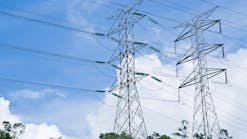In August 2012, the National Agency of Electrical Energy (ANEEL), the Brazilian regulatory electricity agency, regulated the electricity generation connected to the distribution network (grid tie) through net metering, a power compensation model. The model enables customers who deploy generation systems based on alternative energy sources (such as solar, wind or biomass) with up to 5 MW to get benefits from the energy surplus generated and injected into the distribution network.
After a few years of this regulatory framework, distributed generation (DG) in Brazil has grown rapidly, with predominance in photovoltaic (PV) sources, which has created various technical and economic challenges.
DG in Brazil
DG is growing annually in Brazil, driven by regulatory changes and a significant reduction of technology and deployment costs, mainly in PV equipment. As of May 2017, there were 9959 registered DG connections to the distribution system, with an installed capacity of 108.6 MW. PV accounts for almost 99% of DG registrations, with about 75 MW of capacity.
Most of the installations — totaling 7930 — are on residential properties, with 1508 commercial installations and 210 industrial installations. National projections estimate PV DG in Brazil has the potential for 1.2 million consumer units producing their own energy by 2024.
Challenges and Opportunities
DG impacts distribution networks and is therefore a concern for utilities that need to mitigate potential impacts caused by the inherent variability of these resources, on local and regional networks, before they have reached a significant penetration level. Conversely, avoiding the disconnection of these sources during network events can increase power supply availability and improve power quality. This also is beneficial because of the ability of PV inverters to deal with both active and reactive power.
Regulation changes have resulted in Brazilian distribution utilities facing the following challenges:
• Development of connection standards and proceedings
• Acquisition of bidirectional meters
• Access feedback on connections
• Changing the billing system and customer service
• Certification of inverters
• Implementation of a georeferenced system and new procedures with DG
• Adjustments to internet sites so customers can access DG production information
• Procedures for secure deployments
• Development of procedures for installation, inspection and the commercial approach to take as well as staff training.
Distribution utilities can change the business depending on the penetration level of DG and storage devices installed on the distribution network. In many Brazilian states, it is possible to implement grid parity so PV energy is exempt from a service circulation tax.
Case Study 1: CEMIG
Since the regulation went into effect, Companhia Energética de Minas Gerais (CEMIG) has received network access requests because of three issues:
• Elimination of the service circulation tax
• Tariff offers more attractive returns on new business investments
• Solar radiation is high.
It is important to note most DG systems connected to the distribution network are from residential and commercial customers connected to the low-voltage network of 220/127 V because the tariff is higher for these consumer classes. DG provides a return on investment (ROI) within five years. The main source of DG is PV, at 99%, because of the low cost of installation.
Case Study 2: Elektro
Elektro Smart City — a research and development project by distribution utility Elektro and sponsored by ANEEL — aimed to develop a reference model for a smart grid for intelligent cities by installing innovative solutions for distribution network automation, DG, energy metering, electric vehicles (EV), public lighting automation, smart buildings and new services to consumers.
This reference model will serve to evaluate a methodology based on technical, economic and regulatory guidelines to support a future large-scale commercial deployment in the Elektro distribution network. As a reference, this model will have the results achieved with the implantation of a pilot site in the city of São Luiz do Paraitinga. This DG project consists of deployment, testing and analysis of some commercial and residential micro-PV and wind-power generation plants connected to the distribution network, with 66.84 kW distributed over 13 installations.
The ROI for this PV DG installation is based on the following assumptions:
• Consumption profile remains unchanged after the PV DG installation.
• Financial gain potentially has two components: a decrease in the average energy demand of the distribution network and a supply of surplus power for the distribution network.
• Tariff per kilowatt-hour for the residential class applied by Elektro is R$0.74274/kWh, including taxes.
• Opportunity costs are 6.17% per year.
• There is no asset depreciation rate for a PV DG installation, only the maintenance cost.
The measured results of voltage profile, power factor, voltage unbalance and total harmonic distortion following a PV DG installation confirmed all these power-quality parameters were within the limits of the Brazilian grid.
Case Study 3: Electropaulo
Distribution utility Eletropaulo has one of the lower concession areas in Brazil, but with a high concentration of load, representing approximately 9.8% of the energy consumption in the country. The tariff also is low compared with other distribution utilities, which made the low tariff for PV installations unattractive to consumers. However, following the introduction of several incentives since May 2015, the number of new DG connection requests has increased.
In general, residential consumers who have installed DG are from high-class residences. They are driven by mainly sustainable and environmental reasons, not financial benefits. However, for the rest of the country, the low-voltage and low-energy consumption of DG remains equally important. In view of this socioeconomic situation, this case study was an energy-efficient project called the Palace of Bandeirantes, which is the government palace, and involved modernizing the lighting system and installing PV DG.
The PV DG was an 80-kW installation and the illumination modernization changed the lighting and ballast equipment with more efficient equipment. The energy saved was 730 MWh/year and demand was reduced by 208 kW. The objective has increased the energy efficiency of the Palácio dos Bandeirantes installations. The relation of cost benefit (RCB) was 0.83.
A total of 262 solar panels (310-Wp units) were installed on the main roof of the palace and on the annex roofs. The installation also included seven inverters (380 V) and a 380/220-V transformer. Aluminum structures were used to support the solar panels, fixed to concrete blocks to avoid damaging the roof. The anticipated energy generation was 92 MWh/year. Results from this project include the following:
• Energy use was reduced by 730 MWh/year and 208 kW in peak demand.
• Equipment life was obtained from manufacturers. The RCB is unacceptable for this ANEEL. The maximum acceptable RCB is 1.0 for PV DG projects. To make this DG project viable, it is necessary to include other factors such as the illumination and motor efficiencies.
• Energy cost avoided was calculated to be R$199.89/MWh per year, and the demand cost avoided was R$183.05/kW.
• Costs and economic returns were based on an equipment life of 25 years and a total investment of R$815,000.00.
Case Study 4: Lactec Institutes
The PV system installed at the Lactec Institute of Technology for Development is the result of a smart grid research and development project managed by Brazilian utility Light Serviços de Eletricidade S.A. (Light SESA). The PV system has seven different operating modes: batteries and PV providing power to the grid; PV providing power to the grid; grid recharging batteries; PV recharging batteries, EV recharging from the grid and PV, EV recharging from batteries and PV; and EV recharging from batteries.
The project included studies related to the electrical quantities measured on the secondary of a 300-kVA, 13.8-kV/220-V distribution transformer, the point of common coupling (PCC). Analyses also were performed on two scenarios: PCC without a PV system and PCC with a PV system. Measurements were taken at the PCC for one week (1008 measurements, per Brazilian regulation) for both scenarios. The measurements were taken before the PV system was connected in October 2013 and after the PV system was installed in June 2015.
Maximum, average and minimum daily readings of the power factor showed the minimum values without the PV system were below the lower power factor limit value specified by Brazilian regulation (0.92 inductive or capacitive). Recorded measurements of total voltage harmonic distortion during the monitoring periods showed the insertion of the PV system increased the total voltage harmonic distortion.
Photovoltaic Growth
The publication of ANEEL’s regulation regarding DG has resulted in the growth of distributed solar generation in Brazil, particularly in PV sources supported by innovative technology and a reduction in service costs. This has resulted in an increase in investment in PV and other generation sources. The voltage deviation and harmonics in the distribution network normally increase with the installation of PV generation. Therefore, the quality of PV equipment needs to be improved to ensure the quality of energy generated satisfies the standards specified in the Brazilian grid code.
Compared with the other forms of distributed energy sources, and because of the quality of Brazil’s solar irradiation quality, PV has the potential for growth in low- and medium-voltage distribution networks. This analysis has led to the identification of and suggestions for technical and regulatory changes so DG can achieve even higher levels of penetration and contribute to the diversification of the Brazilian energy matrix.
Acknowledgement
The authors wish to thank all those who contributed to the achievement of the case studies, in particular Eletropaulo, CEMIG, Companhia Paranaense de Energia (COPEL), CPFL Energia, Elektro, FITec Technological Innovations, Lactec and Versattus Management Project and Energy Ltda. ♦
Alexandre Aoki has been manager of Lactec Institutes since 2003 and an assistant professor at the University of Paraná since 2008. He is a member of IEEE and the CIGRE C6 study committee. His main research interests include smart grids, renewable energy and battery energy storage systems.
Elio Vicentini is a specialist engineer at Eletropaulo and works on the review, approval and generation connection standards for the electrical system.
Marcio Souza has experience in energy efficiency, solar PV energy and DG connections. Souza coordinated the distributed generation group of the Associação Brasileira de Distribuidores de Energia Elétrica to define the connection rules of the distributors, coordinated the elaboration of CEMIG’s access standards, and managed research and development projects for CEMIG and ANEEL.
Leonardo H. de M. Leite is a senior electrical systems engineer at FITec Technological Innovations and a master electrical system professor at University Center of Belo Horizonte. His current research focuses on energy resources, distributed generation, telecommunications and high-performance automation systems.
Paulo Gama is owner of Versattus Management Project and Energy Ltda., where he works as a research and development consultant. He also serves as the technical coordinator for Brazil’s CIGRE C6 study committee.














